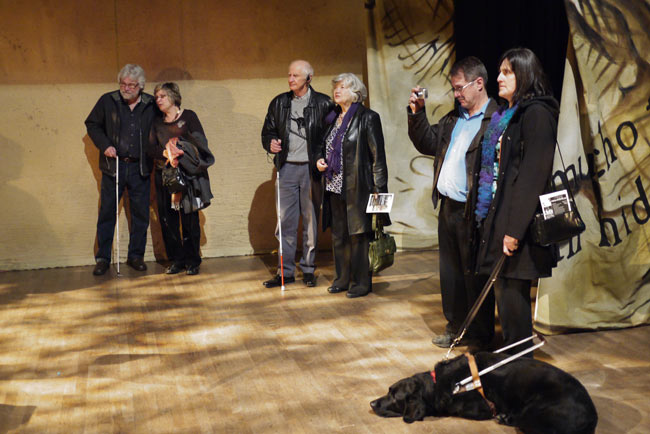
This post is late, I know. But technically, where I am, it’s still Sunday.
And I’m late because I spent a good portion of the day participating in an experiment. An experiment to find and entertain a new audience for Canadian theatre.
Everybody knows that theatre attendance is down across the country. Scan the audience of almost any theatre company and on most nights you could just as well be in church. A lot of grey heads. More affluence than a reflection of the streets outside.
We need new audiences, new blood. But in the Netflix era, with all kinds of entertainment options easily accessible via a computer or Smart TV, live theatre is no longer on everybody’s radar.
So why not offer it to an audience who can’t even see the play?
Those of us who work or have worked in theatre know it’s primarily an audial experience. Yeah, the sets and costumes and lighting and stagecraft contribute enormously. But at its heart the theatre is dialogue enhanced by performance.
But what if technology could supply what a sightless person misses, enriching their experience?
This afternoon, Victoria’s Belfry Theatre played its current hit show, David Mamet’s “Speed The Plow” for an audience that was largely blind.
White canes and sunglasses were a common sight in the crowd. Guide dogs lounged before the front row, pleased to be in a space they’d never experienced and giddy to be among so many of their canine profession.
Prior to the opening curtain, sightless audience members were supplied with an easy to use handheld receiver and headset supplied by Vocaleye, Canada’s first live descriptive arts service for the blind.
Ten minutes before the show, their audio guide began broadcasting to them, describing the set, the actors and the costumes, giving them as much information as possible to enhance their enjoyment of the play.
Once the show had started, they were fed descriptions of the action and, from time to time, brief snippets of physical performance – “she smiles”, “Charlie smacks Bobby on the back of his head”. All unheard by any without a headset.
If the final applause were any measure, the experiment was an enormous success. Afterward, those wishing to participate were given a “touch tour” of the stage, able to handle props, try out the furniture and speak with the cast and crew.
I got the feeling a lot of people who’d never before attended a play were intent on coming back.
You can learn more about Vocaleye here. Consider mentioning the service to a theatre company you know and/or love and…
Enjoy Your Sunday.




1 comment:
Audio description in Canada has expanded in a manner that is the reverse of what happened in the U.S., where the Pfanstiehls invented it for theatre first and the technique came to TV and film later. Canadian TV has a vast quantity of second-rate audio description, but Canadian theatre has almost none.
Post a Comment